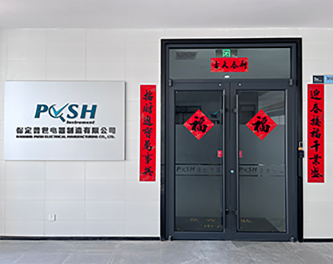 English
English



-
 Afrikaans
Afrikaans -
 Albanian
Albanian -
 Amharic
Amharic -
 Arabic
Arabic -
 Armenian
Armenian -
 Azerbaijani
Azerbaijani -
 Basque
Basque -
 Belarusian
Belarusian -
 Bengali
Bengali -
 Bosnian
Bosnian -
 Bulgarian
Bulgarian -
 Catalan
Catalan -
 Cebuano
Cebuano -
 China
China -
 China (Taiwan)
China (Taiwan) -
 Corsican
Corsican -
 Croatian
Croatian -
 Czech
Czech -
 Danish
Danish -
 Dutch
Dutch -
 English
English -
 Esperanto
Esperanto -
 Estonian
Estonian -
 Finnish
Finnish -
 French
French -
 Frisian
Frisian -
 Galician
Galician -
 Georgian
Georgian -
 German
German -
 Greek
Greek -
 Gujarati
Gujarati -
 Haitian Creole
Haitian Creole -
 hausa
hausa -
 hawaiian
hawaiian -
 Hebrew
Hebrew -
 Hindi
Hindi -
 Miao
Miao -
 Hungarian
Hungarian -
 Icelandic
Icelandic -
 igbo
igbo -
 Indonesian
Indonesian -
 irish
irish -
 Italian
Italian -
 Japanese
Japanese -
 Javanese
Javanese -
 Kannada
Kannada -
 kazakh
kazakh -
 Khmer
Khmer -
 Rwandese
Rwandese -
 Korean
Korean -
 Kurdish
Kurdish -
 Kyrgyz
Kyrgyz -
 Lao
Lao -
 Latin
Latin -
 Latvian
Latvian -
 Lithuanian
Lithuanian -
 Luxembourgish
Luxembourgish -
 Macedonian
Macedonian -
 Malgashi
Malgashi -
 Malay
Malay -
 Malayalam
Malayalam -
 Maltese
Maltese -
 Maori
Maori -
 Marathi
Marathi -
 Mongolian
Mongolian -
 Myanmar
Myanmar -
 Nepali
Nepali -
 Norwegian
Norwegian -
 Norwegian
Norwegian -
 Occitan
Occitan -
 Pashto
Pashto -
 Persian
Persian -
 Polish
Polish -
 Portuguese
Portuguese -
 Punjabi
Punjabi -
 Romanian
Romanian -
 Russian
Russian -
 Samoan
Samoan -
 Scottish Gaelic
Scottish Gaelic -
 Serbian
Serbian -
 Sesotho
Sesotho -
 Shona
Shona -
 Sindhi
Sindhi -
 Sinhala
Sinhala -
 Slovak
Slovak -
 Slovenian
Slovenian -
 Somali
Somali -
 Spanish
Spanish -
 Sundanese
Sundanese -
 Swahili
Swahili -
 Swedish
Swedish -
 Tagalog
Tagalog -
 Tajik
Tajik -
 Tamil
Tamil -
 Tatar
Tatar -
 Telugu
Telugu -
 Thai
Thai -
 Turkish
Turkish -
 Turkmen
Turkmen -
 Ukrainian
Ukrainian -
 Urdu
Urdu -
 Uighur
Uighur -
 Uzbek
Uzbek -
 Vietnamese
Vietnamese -
 Welsh
Welsh -
 Bantu
Bantu -
 Yiddish
Yiddish -
 Yoruba
Yoruba -
 Zulu
Zulu
Understanding the Standards and Procedures for Hipot Testing in Electrical Devices
Understanding Hipot Test Standards
Hipot testing, short for High Potential testing, is a crucial procedure used to ensure the electrical safety of devices and equipment. This testing method simulates the conditions that equipment may face during its operational lifespan, primarily focusing on insulation integrity. As various industries evolve and technology advances, adhering to established standards for hipot testing becomes essential for maintaining safety and compliance.
What is Hipot Testing?
Hipot testing involves applying a high voltage between electrical conductors and the equipment's casing to verify that the insulation can withstand voltage stress without breaking down. This process is vital for preventing electrical shocks, short circuits, and potential fires that can arise from faulty insulation. The test primarily focuses on two key aspects
1. Dielectric Strength This refers to the maximum voltage that an insulating material can withstand without failure. The hipot test aims to ensure that insulation systems are robust enough to prevent any electrical leakage.
2. Insulation Resistance This aspect measures the resistance of the insulating material over time. High insulation resistance indicates sound insulation quality, while low resistance can signal potential issues, necessitating repairs or replacements.
Importance of Standards
Hipot test standards are vital in guiding manufacturers and testing laboratories in conducting tests consistently and accurately. These standards are set by reputable organizations, such as the International Electrotechnical Commission (IEC), Underwriters Laboratories (UL), and the American National Standards Institute (ANSI). Adhering to these standards ensures that equipment meets safety requirements as well as performance expectations.
Key Standards
Some of the most widely recognized hipot testing standards include
- IEC 61010 This standard outlines safety requirements for electrical equipment used for measurement, control, and laboratory use, providing guidelines on the conditions under which hipot tests should be performed.
hipot test standard

- UL 61800 This standard focuses on adjustable speed drives and their associated safety.
- ANSI/UL 60950-1 This sets the safety standards for information technology equipment
. It includes detailed requirements on insulation and hypot testing to ensure user safety.Conducting Hipot Tests
When conducting a hipot test, it is essential to follow a systematic approach to maintain accuracy and safety
1. Preparation Ensure that the equipment is disconnected from power sources and properly grounded. Identify the necessary test points.
2. Selection of Test Voltage Determine the appropriate test voltage based on the manufacturer's specifications and the relevant standards. The voltage typically ranges from 500V to 5000V, depending on the type of equipment.
3. Testing Procedure Connect the hipot tester to the identified test points. Gradually ramp up the voltage to the specified level while monitoring the current. A current reading above the acceptable threshold usually indicates insulation failure.
4. Interpretation of Results If the equipment passes the hipot test, it shows that it can handle the stresses previously outlined. A failing result requires further inspection and repair.
5. Documentation Record the results meticulously. Documentation of test procedures and outcomes is essential for regulatory compliance and future reference.
Conclusion
In conclusion, hipot testing is a fundamental aspect of electrical safety, ensuring that equipment and devices are capable of withstanding high voltage stresses. Adhering to established standards helps maintain a consistent level of safety across industries, protecting both users and equipment. By understanding the importance of hipot test standards, manufacturers can produce safer products, and end users can operate equipment with confidence in its reliability and safety.
-
Testing Equipment Industry Sees Major Advancements in 2025: Smart & Precision Technologies Lead the WayNewsJun.06,2025
-
Applications of Direct Current Generators in Renewable Energy SystemsNewsJun.05,2025
-
Hipot Tester Calibration and Accuracy GuidelinesNewsJun.05,2025
-
Digital Circuit Breaker Analyzer Features and BenefitsNewsJun.05,2025
-
Benefits of Real-Time Power Quality Monitoring Devices for Industrial EfficiencyNewsJun.05,2025
-
Earth Fault Loop Testing in High-Rise Building Electrical SystemsNewsJun.05,2025



